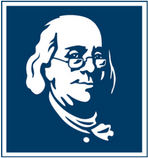|
The Philadelphia
Contributionship
Digital Archives
About the Company
About the Collection
Essays and Exhibits
|
Digitizing the Collection
Scanning Equipment
(3) Epson Perfection 3170 Photo – Scanning Bed Size (9 x 12 inches)
(1) Microtek Scanmaker 9800XL – Scanning Bed Size (12 x 17 inches)
(1) UMAX Powerlook 2100XL – Scanning Bed Size (12 x 17 inches)
(1) Cruse CS220 ST – Scanning Bed Size (72 x 48 inches)
Desktop Software
A custom-designed document scanning application, called DocScan.
Adobe PhotoShop
ER Mapper ECW plugin for Photoshop
Scanning Process
- Boxes of surveys are picked up at The Philadelphia Contributionship and transported to the Athenæum for scanning.
- The scanning technician arranges the sheets within a given survey number from earliest to latest.
- Metadata is entered from the originals (address, building type, owner, tenant, surveyor, etc.) into a custom document scanning application. The data is stored in a file which follows the image through the processing stages.
- The page is scanned at 400dpi (600dpi if it includes a photo) in 24-bit color. Both sides of each sheet are scanned.
- The archival image is rotated, cropped, and saved as an uncompressed TIFF image.
- The process is repeated for the next sheet.
When a box is complete, the scans are processed for delivery on the Internet. Three types of images are produced from each scan.
- a compressed ECW file which allows for high resolution viewing via the Internet
- a medium display image (250 pixels wide)
- a thumbnail image (100 pixels wide)
These three types of image files, along with the data files are uploaded to the server.
The original scans (Archival files) are archived to DVDs. Two sets of DVDs are made. One
is sent to the Contributionship, the other remains at the Athenæum as a backup.
|

